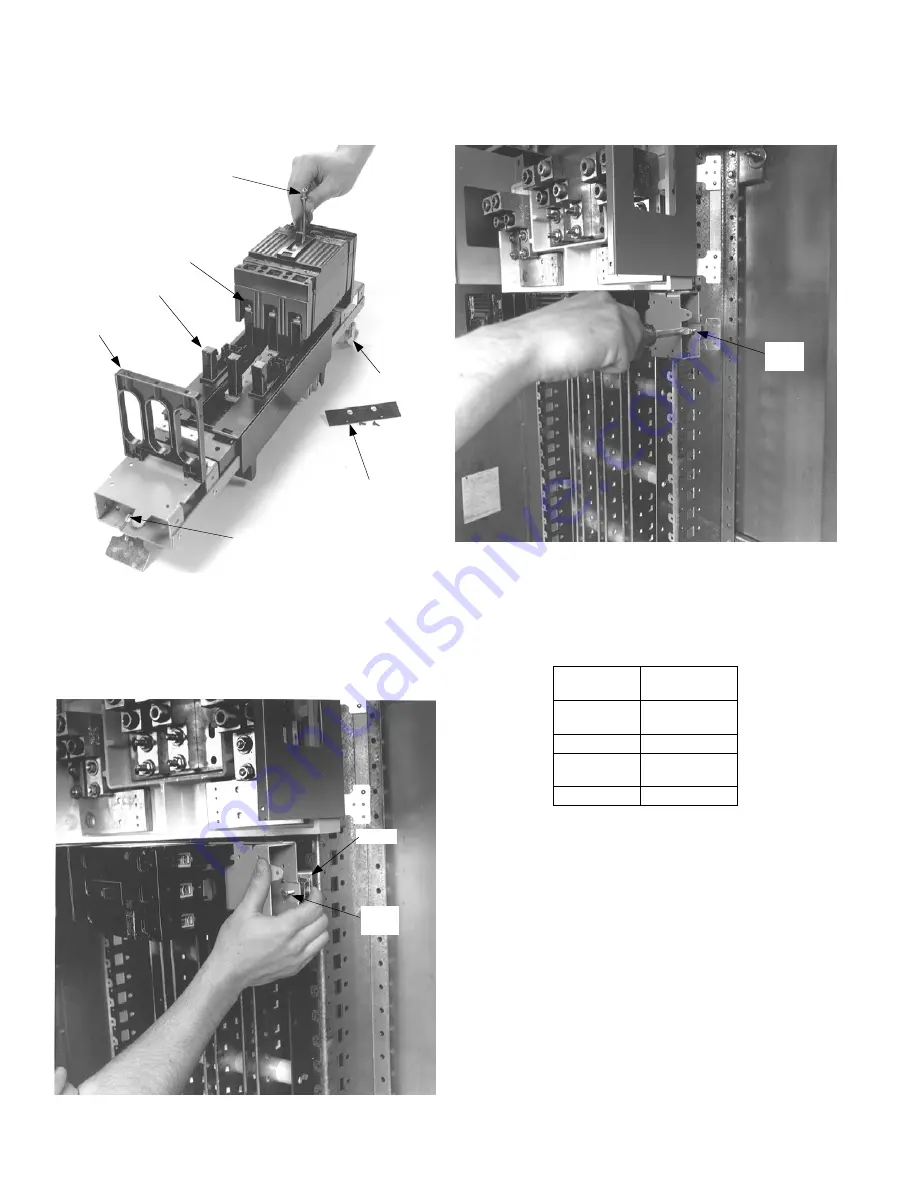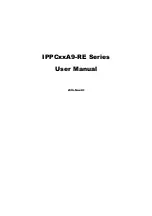
For double-branch devices, repeat this procedure for
the second breaker. Combinations of circuit breaker
types TEB, TED, THED, SEDA, SEHA, SELA, or
SEPA may be used. Breaker type TEL may be used
only with a breaker of like type.
Figure 4. Installing the breaker on the module.
4. Position the breaker module.
Loosen the latch lock
screws and fully retract the latches, as shown in Figure
5. Line up the guide fingers on both ends of the
module with the notches in the panelboard interior
rails. Allow no space between units.
Figure 5. Positioning the breaker module.
5. Install the module.
Latch one side of the circuit
breaker module. Release the rail latch. Pivot the
module onto the bus bars and engage the second
latch. Release the rail latch. Tighten the rail latch
screws to 25 in-lb, as shown in Figure 6.
Figure 6. Installing the breaker module.
6. Wire the circuits.
Refer to the label on the circuit
breaker for the proper tightening torque.
7. Filler plate kits.
Install the appropriate filler plate kits,
as listed in Table 1.
Filler Plate
Cat. No.
Module Type
AFP3SED
AMC6EB
AMC4SE
AFP2TED
AMC4EB
AFP4SED
AMC6EBS
AMC4EBS
AFP3ELD
AMC6EL
Table 1. Filler plate kit for each breaker module type.
Attention – Procedure for Aluminum
Terminations
1.
Strip the insulation, being careful to not nick the wire.
2.
Clean the wire strands with a wire brush.
3.
Thoroughly coat the stripped conductor with a
suitable antioxidant compound, such as ALNOX or
PENETROX A13.
4.
Insert the conductor and tighten the connector screw
to the indicated torque, as indicated on the rating
label.
Lug
Cover
Stud
Post
#10-32 Screw-
Washer
Assembly
#8-32 Screw &
Cup Washer
Filler
Support
Latch
Screw
Latch
Latch
Screw
Latch
Latch
Screw
Summary of Contents for Spectra Series AMC6EB
Page 3: ......






















